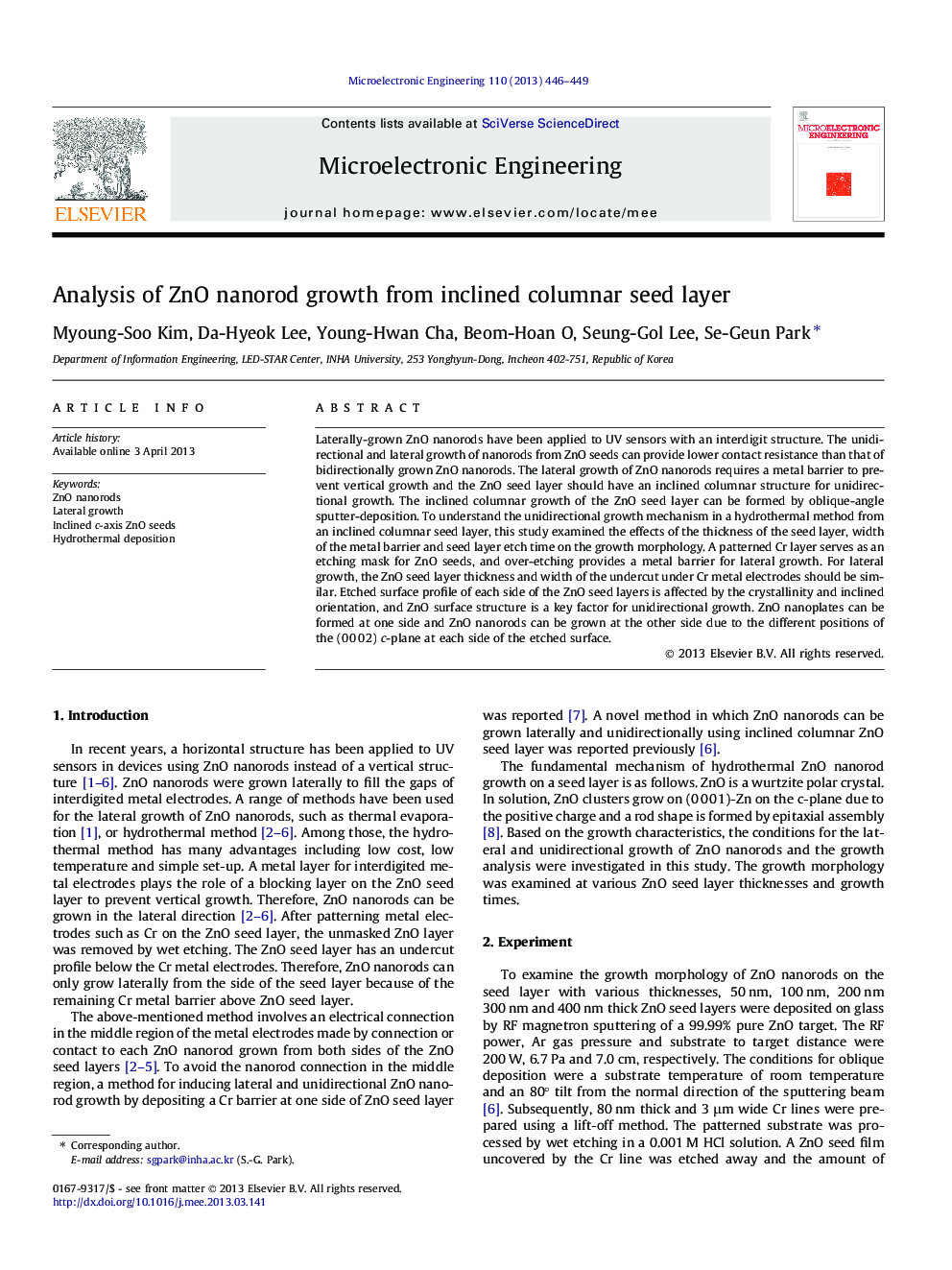| کد مقاله | کد نشریه | سال انتشار | مقاله انگلیسی | نسخه تمام متن |
|---|---|---|---|---|
| 544312 | 1450371 | 2013 | 4 صفحه PDF | دانلود رایگان |

• Lateral growth of nanorods requires a metal barrier for preventing vertical growth.
• For unidirectional growth ZnO seed layer should have an inclined columnar structure.
• The etched surface profile is influenced by crystallinity and inclined orientation.
• Each side of etched surface has the different position of (0 0 0 2) c-plane.
• ZnO nanoplates can be formed at one side and nanorods can be grown at the other side.
Laterally-grown ZnO nanorods have been applied to UV sensors with an interdigit structure. The unidirectional and lateral growth of nanorods from ZnO seeds can provide lower contact resistance than that of bidirectionally grown ZnO nanorods. The lateral growth of ZnO nanorods requires a metal barrier to prevent vertical growth and the ZnO seed layer should have an inclined columnar structure for unidirectional growth. The inclined columnar growth of the ZnO seed layer can be formed by oblique-angle sputter-deposition. To understand the unidirectional growth mechanism in a hydrothermal method from an inclined columnar seed layer, this study examined the effects of the thickness of the seed layer, width of the metal barrier and seed layer etch time on the growth morphology. A patterned Cr layer serves as an etching mask for ZnO seeds, and over-etching provides a metal barrier for lateral growth. For lateral growth, the ZnO seed layer thickness and width of the undercut under Cr metal electrodes should be similar. Etched surface profile of each side of the ZnO seed layers is affected by the crystallinity and inclined orientation, and ZnO surface structure is a key factor for unidirectional growth. ZnO nanoplates can be formed at one side and ZnO nanorods can be grown at the other side due to the different positions of the (0 0 0 2) c-plane at each side of the etched surface.
Graphical AbstractFigure optionsDownload as PowerPoint slide
Journal: Microelectronic Engineering - Volume 110, October 2013, Pages 446–449